Moving can be a stressful experience, especially when it comes to packing your kitchen items. The kitchen is often the most challenging room to pack, with its fragile and heavy items. However, proper packing of kitchen items is crucial to ensure that they arrive at the new location safely and undamaged. In this blog, we will provide you with tips and guidelines on how to pack your kitchen items effectively and efficiently when moving.
Importance of Packing Kitchen Items Properly When Moving:
Packing your kitchen items correctly is crucial for various reasons. Firstly, it ensures that all your kitchen items, including fragile ones, are safe and secure during the move. Secondly, packing your kitchen items appropriately will help you stay organized and make unpacking much more comfortable and quicker. Thirdly, it can also help you save money by avoiding damage and the need to replace any broken or lost items.
Overview of the Packing Process:
Packing your kitchen can seem daunting, but with a little planning, it can be a smooth and manageable process. Here is an overview of the packing process:
- Make an inventory of kitchen items
- Gather packing supplies
- Start packing
- Labeling and organizing
- Transporting the kitchen items
Brief Outline of the Steps:
- Make an inventory of kitchen items: Before you start packing, it is essential to take an inventory of all the kitchen items you own. This inventory will help you identify what you need to pack, what you can discard, and what you might need to purchase before moving. You can make this process easier by sorting your items into categories such as appliances, dishes, utensils, and pantry items.
- Gather packing supplies: After making your inventory, you will need to gather packing supplies. These may include cardboard boxes, packing tape, bubble wrap, packing paper, markers, and labels. You can purchase these supplies from a moving company or hardware store, or you can reuse boxes and materials you have on hand.
- Start packing: When you start packing, it is best to begin with the non-essential items such as specialty appliances, seasonal items, and lesser-used dishes. As you pack each box, remember to label it with its contents, and be sure to wrap any fragile items with bubble wrap or packing paper. When packing appliances, be sure to remove any removable parts and wrap them separately.
- Labeling and organizing: Proper labeling is essential for keeping your kitchen items organized during the move. Be sure to label each box with the room it belongs in and its contents. This will make unpacking much more manageable and efficient. You can also use color-coded labels to help identify which boxes belong to each room.
- Transporting the kitchen items: When it comes to transporting your kitchen items, be sure to load the boxes onto the moving truck carefully. Place the heaviest boxes on the bottom and lighter boxes on top. You can also use blankets or towels to cushion and protect your items during transportation.
Packing your kitchen items can be challenging, but it is essential to ensure their safe arrival at your new home. By following the steps outlined in this blog, you can pack your kitchen items efficiently and effectively. Remember to take inventory, gather supplies, start packing, label and organize, and transport your items carefully. With a little planning and preparation, your kitchen move can be a stress-free and successful experience.
Table of Contents
ToggleMake an inventory of kitchen items
Making an inventory of your kitchen items is an important step in preparing for a move. Before you start packing, it’s important to assess what you have and what you need. This process involves decluttering, downsizing, sorting, and organizing your kitchen items. In this section, we will discuss the importance of decluttering and downsizing, as well as tips for sorting and organizing your kitchen items. Additionally, we will explore strategies for disposing of unwanted items.
Importance of decluttering and downsizing
Decluttering and downsizing your kitchen items can save you time, money, and energy in the long run. It is important to consider what items you really need and use, and what can be left behind. Moving is a great opportunity to get rid of items that are no longer necessary, or that have been forgotten about.
One of the main benefits of decluttering and downsizing is that it can help you save money on moving costs. The less you have to move, the less expensive it will be. Additionally, downsizing can help you make your new kitchen more functional and organized. By only keeping the items that you need and use, you can create a more efficient space.
Tips for sorting and organizing
Sorting and organizing your kitchen items can be overwhelming, but it doesn’t have to be. Here are a few tips to help you get started:
- Start with one area at a time: Begin by focusing on one area of your kitchen, such as your cabinets or drawers. This can help you stay focused and prevent you from becoming overwhelmed.
- Create piles: As you sort through your kitchen items, create piles for items that you want to keep, donate, sell, or throw away. This can help you stay organized and keep track of what you’re getting rid of.
- Consider your new space: As you sort through your items, think about how they will fit into your new kitchen. If you’re moving to a smaller space, you may need to be more selective about what you keep.
- Be honest with yourself: It can be tempting to keep items that you rarely use, but it’s important to be honest with yourself about what you really need and use.
Strategies for disposing of unwanted items
Once you’ve sorted through your kitchen items, you’ll need to dispose of the items you no longer need. Here are a few strategies for getting rid of unwanted items:
- Donate: Consider donating your unwanted items to a local charity or non-profit organization. This can help you give back to your community and support a good cause.
- Sell: If you have items that are still in good condition, consider selling them online or at a yard sale. This can help you earn some extra cash and reduce the number of items you need to move.
- Recycle: Some items, such as plastic containers and paper products, can be recycled. Check with your local recycling center to see what items they accept.
- Dispose of: For items that cannot be donated, sold, or recycled, you may need to dispose of them. Check with your local trash collection service to see how to properly dispose of these items.
Making an inventory of your kitchen items is an important step in preparing for a move. By decluttering, downsizing, sorting, and organizing your kitchen items, you can save time, money, and energy. Additionally, by disposing of unwanted items properly, you can reduce waste and give back to your community.
Gather packing supplies
When it comes to packing your kitchen, having the right packing supplies is essential to ensure that your items arrive at your new home safely and in good condition. Here are some essential packing materials that you will need to pack up your kitchen:
A. Essential Packing Materials
- Boxes: You will need boxes of various sizes to pack up your kitchen items. Small boxes can be used for fragile items, while larger boxes can be used for larger and heavier items.
- Packing paper: Packing paper is used to wrap fragile items such as glasses, plates, and other breakables.
- Bubble wrap: Bubble wrap is essential for packing fragile items such as glasses, vases, and other delicate items.
- Packing tape: Packing tape is used to seal boxes and keep them secure during transit.
- Marker: A marker is essential for labeling boxes and keeping track of what is inside each box.
- Box cutter: A box cutter is used to open boxes when you arrive at your new home.
Tips for Obtaining Packing Supplies on a Budget
If you’re moving on a budget, obtaining packing supplies can be expensive. However, there are several tips you can follow to get the supplies you need without breaking the bank:
- Use what you already have: Look around your home for boxes, bubble wrap, and packing paper. You can also use towels, blankets, and newspaper to wrap fragile items.
- Ask friends and family: If you know someone who has recently moved, ask them if they have any packing supplies that they no longer need.
- Check online marketplaces: Websites like Craigslist, Facebook Marketplace, and Nextdoor often have people giving away or selling packing supplies at a low cost.
- Rent supplies: Some moving companies offer the option to rent packing supplies. This can be a cost-effective solution, especially if you don’t plan on moving again anytime soon.
Your Hometown Mover Offers All the Necessary Packing Supplies to Pack Up Your Kitchen
If you’re looking for a hassle-free packing experience, Your Hometown Mover offers all the necessary packing supplies to pack up your kitchen. Our professional movers will provide you with high-quality boxes, packing paper, bubble wrap, packing tape, markers, and box cutters. You won’t have to worry about running out of supplies or making multiple trips to the store to get what you need.
Additionally, our team of experienced movers can also help you pack up your kitchen efficiently and safely. We have the knowledge and skills to pack delicate items such as glasses, plates, and other breakables, as well as larger items such as appliances, pots, and pans. We will also label each box, so you know exactly what’s inside, making unpacking at your new home a breeze.
Having the right packing supplies is essential when it comes to packing your kitchen for a move. By following the tips above, you can obtain the supplies you need on a budget. However, if you’re looking for a hassle-free packing experience, Your Hometown Mover offers all the necessary packing supplies to pack up your kitchen, as well as expert packing services to ensure that your items arrive safely at your new home.
Start packing
When it comes to packing up your kitchen, it’s important to ensure that all items are packed securely and safely to avoid any damage during the move. This is especially true for fragile items, appliances, utensils and flatware, dishes and glassware, and pots and pans. Here are some tips and strategies for packing each of these categories:
Tips for packing fragile items
Fragile items such as glassware, dishes, and other breakables require special attention and care during packing. Here are some tips to keep in mind:
- Use bubble wrap or packing paper: Wrap each item individually with bubble wrap or packing paper to prevent them from bumping into each other and breaking during transportation.
- Pack items vertically: When packing dishes, glasses, and other similar items, place them vertically in the box rather than stacking them horizontally. This will help prevent them from shifting and breaking during the move.
- Use sturdy boxes: Make sure the boxes you use to pack your fragile items are strong enough to handle the weight and protect the contents. Reinforce the boxes with packing tape for added strength.
- Label boxes as “fragile”: Clearly label the boxes containing fragile items as “fragile” to alert the movers and avoid any accidental damage.
Strategies for packing appliances
Appliances such as blenders, mixers, and coffee makers require careful packing to avoid damage during the move. Here are some strategies to consider:
- Clean appliances before packing: Before packing any appliance, make sure it’s clean and dry to avoid any damage or mold growth during the move.
- Use original packaging: Whenever possible, use the original packaging to pack your appliances. If you don’t have the original packaging, use sturdy boxes with packing paper or bubble wrap to protect the appliance.
- Secure cords and attachments: Wrap cords and attachments with twist ties or zip ties and place them in a separate bag. This will prevent them from getting tangled or damaged during the move.
- Consider professional packing: For large appliances such as refrigerators or stoves, it may be best to hire a professional packing service to ensure they are packed safely and securely.
How to pack utensils and flatware
Utensils and flatware may seem easy to pack, but they can easily get lost or damaged during the move. Here are some tips for packing them:
- Use a utensil tray: Place your utensils and flatware in a utensil tray and wrap it with packing paper or bubble wrap. This will prevent them from getting lost or damaged during the move.
- Label the tray: Clearly label the tray with the contents so it’s easy to identify and unpack later.
- Use resealable bags: For small items such as measuring spoons or other small utensils, place them in resealable bags before packing them in the tray. This will prevent them from falling out during transportation.
Packing dishes and glassware
Packing dishes and glassware requires extra care and attention to avoid any damage during the move. Here are some tips to consider:
- Use a dish box: Use a box specifically designed for dishes and glassware. These boxes have extra padding and dividers to protect each item during transportation.
- Wrap each item: Wrap each dish and glass with bubble wrap or packing paper to protect it from bumps and scratches.
- Pack vertically: Place the dishes and glassware vertically in the box, rather than horizontally. This will prevent them from shifting and breaking during the move.
- Fill empty spaces: Use packing paper or bubble wrap to fill any empty spaces in the box to prevent items from moving around during transportation.
Wrapping and packing pots and pans
Pots and pans can be bulky and heavy, so it’s important to pack them properly to avoid damage during the move. Here are some tips for wrapping and packing pots and pans:
- Stack pots and pans: Stack pots and pans together with the largest item at the bottom and the smallest at the top. This will help save space and make them easier to pack.
- Use packing paper: Wrap each pot and pan with packing paper or bubble wrap to protect them from scratches and dents.
- Use dish towels or oven mitts: To save space and protect your pots and pans, you can use dish towels or oven mitts to wrap them instead of packing paper or bubble wrap.
- Fill empty spaces: Fill any empty spaces in the box with packing paper or bubble wrap to prevent items from moving around during transportation.
Your Hometown Mover can properly pack your items for you.
Packing a kitchen can be a time-consuming and challenging task, especially if you have a lot of fragile or bulky items. If you’re feeling overwhelmed, consider hiring a professional moving company like Your Hometown Mover to help with the packing process. They have the experience and expertise to pack your items safely and efficiently, giving you peace of mind during the move.
Packing a kitchen can be a daunting task, but with the right tools and strategies, it can be done successfully. Follow these tips for packing fragile items, appliances, utensils and flatware, dishes and glassware, and pots and pans, and consider hiring a professional moving company like Your Hometown Mover for added support. With proper packing techniques, your kitchen items can arrive at your new home safe and sound.
Labeling and organizing
Labeling and organizing are essential components of any successful move, and the kitchen is no exception. Proper labeling and organization can help you keep track of your kitchen items during the move, and make unpacking a breeze. In this section, we will discuss why labeling is important, provide tips for labeling boxes, and offer strategies for organizing boxes for easy unpacking.
Why labeling is important
Labeling boxes is crucial to maintaining an organized and efficient move, particularly when it comes to the kitchen. Without proper labeling, you risk losing track of your kitchen items or misplacing them during the move. This can lead to unnecessary stress and make the unpacking process much more difficult. Labeling also allows you to prioritize which boxes need to be unpacked first, depending on their contents.
In addition, labeling can help you keep track of fragile items and ensure that they are handled with care. By clearly labeling boxes containing fragile items, you can communicate to your movers or helpers which boxes require extra attention.
Tips for labeling boxes
Labeling boxes might seem like a straightforward task, but there are a few tips to keep in mind to ensure that your labels are clear and easy to read.
- Use a permanent marker: When labeling boxes, use a permanent marker instead of a pen or pencil. This will ensure that your labels do not smudge or fade during the move.
- Label the top and sides of each box: To ensure that your labels are visible, label both the top and sides of each box. This will make it easier to identify the contents of the box, even if it is stacked with other boxes.
- Use clear and concise labels: When labeling boxes, use clear and concise labels that describe the contents of the box. For example, instead of labeling a box “Kitchen Items,” label it “Kitchen Utensils” or “Dishes.” This will make it easier to locate specific items when unpacking.
- Color-code boxes: To make it easier to identify which boxes belong in which room, consider color-coding your boxes. For example, you could use blue tape for kitchen boxes and red tape for bedroom boxes.
Strategies for organizing boxes for easy unpacking
Labeling your boxes is only half the battle. Organizing your boxes in a way that makes sense for you can also make the unpacking process much smoother. Here are a few strategies to consider when organizing your kitchen boxes for easy unpacking.
- Group items by category: When packing your kitchen items, group similar items together. For example, pack all of your pots and pans together, all of your dishes together, and all of your utensils together. This will make it easier to unpack and organize your kitchen when you arrive at your new home.
- Pack essential items separately: When packing your kitchen items, pack essential items separately in a clearly labeled box. This box should contain items that you will need immediately upon arriving at your new home, such as a coffee maker, toaster, or microwave.
- Pack heavier items on the bottom: When packing your kitchen boxes, pack heavier items on the bottom and lighter items on top. This will prevent lighter items from getting crushed or damaged during transportation.
- Consider using dividers or inserts: To prevent items from shifting during transportation, consider using dividers or inserts when packing your kitchen boxes. For example, you could use dish dividers to separate your dishes, or foam inserts to cushion fragile items.
Labeling and organizing your kitchen items is essential to a successful move. By following these tips and strategies, you can ensure that your kitchen items are packed safely and efficiently, and that the unpacking process is as smooth as possible. Remember to label your boxes clearly, organize your items by category, and pack essential items separately.
Transporting the kitchen items
Transporting the kitchen items is one of the most crucial stages of moving. If not done properly, it can result in damaged items and added stress to an already stressful process. In this section, we will discuss tips for loading and unloading, strategies for securing fragile items during transportation, and the benefits of hiring Your Hometown Movers for your move.
Tips for loading and unloading
- Use the right equipment
Before starting the loading process, it is important to have the right equipment. This includes a dolly, moving blankets, and straps. These tools will help you to move heavy items such as refrigerators and stoves easily and safely.
- Protect your floors
Moving heavy items in and out of your house can be challenging, and it is important to protect your floors. Using floor runners and carpet protectors can help prevent damage to your floors.
- Load heavy items first
When loading the moving truck, it is important to start with the heaviest items. This includes refrigerators, ovens, and other large appliances. These items should be placed at the back of the truck to distribute the weight evenly.
- Stack boxes carefully
Boxes should be stacked carefully to avoid damage to fragile items. Heavy boxes should be placed at the bottom, with lighter boxes on top. Use moving blankets or bubble wrap to cushion fragile items and prevent them from breaking.
- Secure the load
Once everything is loaded, it is important to secure the load to prevent items from shifting during transportation. This can be done by using straps and bungee cords.
Strategies for securing fragile items during transportation
- Wrap fragile items
Fragile items such as dishes, glassware, and ceramics should be wrapped individually in packing paper or bubble wrap. This will protect them from scratches and prevent them from breaking.
- Use appropriate boxes
Fragile items should be packed in appropriate boxes such as dish packs or wardrobe boxes. These boxes are designed to protect delicate items during transportation.
- Label boxes as fragile
Labeling boxes as fragile will alert the movers to handle them with extra care. This will help prevent damage to delicate items during transportation.
- Use furniture blankets
Furniture blankets can be used to protect larger fragile items such as mirrors and artwork. Wrap the item in the blanket and secure it with tape or bungee cords.
Your Hometown Mover can perform your move
Moving can be stressful, but hiring a professional moving company can make the process much easier. Your Hometown Mover is a full-service moving company that can handle all aspects of your move, including packing and transportation.
- Professional packing services
Your Hometown Mover offers professional packing services that can save you time and reduce the risk of damage to your belongings. Their experienced packers will carefully pack your kitchen items and other fragile belongings using high-quality packing materials.
- Safe and efficient transportation
Your Hometown Mover has the equipment and experience to transport your belongings safely and efficiently. Their moving trucks are equipped with air-ride suspension, which provides a smooth ride and reduces the risk of damage during transportation.
- Peace of mind
Moving can be a stressful experience, but hiring a professional moving company like Your Hometown Mover can give you peace of mind. They are licensed, insured, and have a reputation for providing quality service.
Transporting the kitchen items is a critical stage of the moving process. By following the tips outlined in this section, you can ensure that your kitchen items arrive at your new home safely and without damage. If you want to take the stress out of your move, consider hiring Your Hometown Mover for your next move.





